Infants move from sitting to kneeling using different strategies
Typically developing infants learn to transition from sitting to prone and prone kneeling almost by accident. Reaching far forwards and across the body to get hold of a toy throws them off balance and consequent forward reaching (protective extension of the upper extremity) to stop themselves falling over.
With practice the infant learns to control shifting the center of mass forwards which allows the for the redistribution of weight onto knees and hands. As is often the case in transitions between positions, the infant learns to first produce and then control momentum of the trunk. (See The day will learned to roll)
Reach far forwards, rotate trunk and move into kneeling
Here you see Will (7 months) rotating the trunk and reach across to get hold of a toy, loose his balance, put his reaching hand on the mat, move into prone kneeling and then into prone. This transition is is not very controlled.
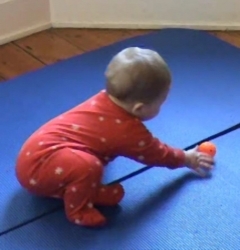
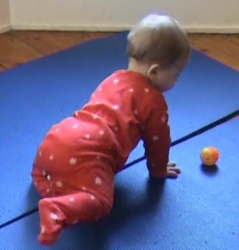
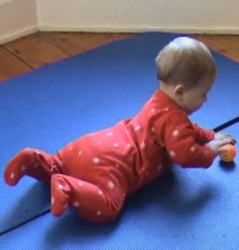
Video: Will 7 months
Lean straight forwards when hips are widely abducted
Sometimes an infant will initiate a transition to prone by leaning far forwards. This is often the case if the infant tends to sit with the hips in wide abduction/external rotation.
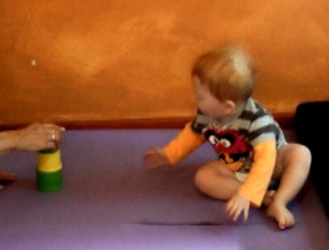
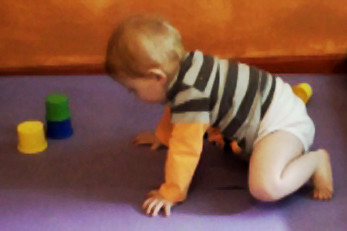
The transition from sitting to prone kneeling may be triggered by reaching to the side, loosing balance in the process, and initiating protective extension in the arms to prevent a fal.
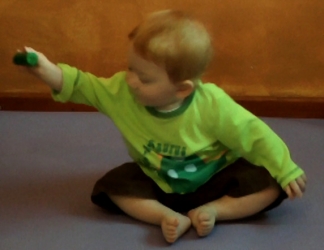
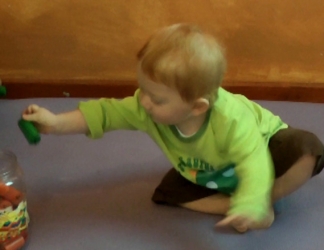
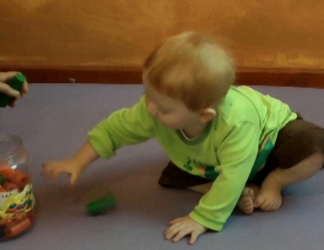
Using a step to make the transition easier
Roan at 11 months was not yet able to move from sitting into the crawling position.
Here you see how she can twist and reach for toys placed behind her, but get stuck and instead of going up onto her hands and knees she turns back to sitting.
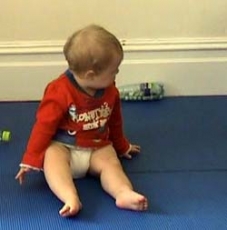
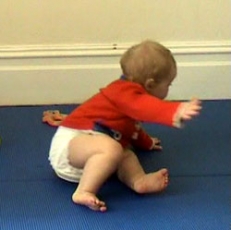
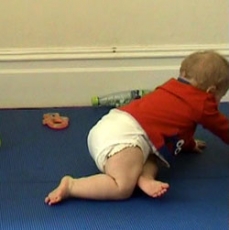
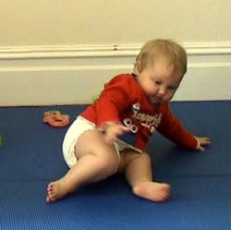
A low block allows Roan to get onto her hands and knees
The next series of pictures shows how Roan uses the block to provide some support for her trunk and manages to lift herself up onto her knees.
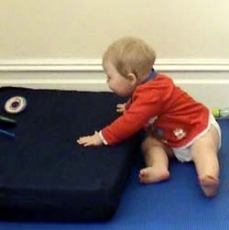
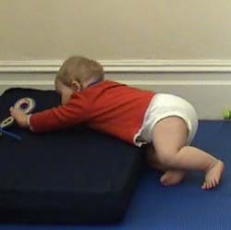
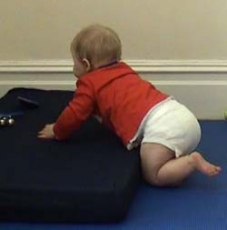
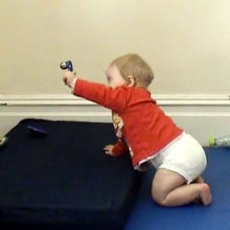
We then spent a good 10 minutes playing in this position. My job was to provide a succession of toys to keep her interensted and reaching in different directions. She was especially interested in the spinning tops.
Max works hard to reach a desired toy
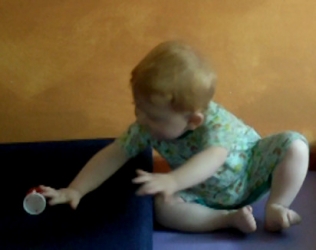
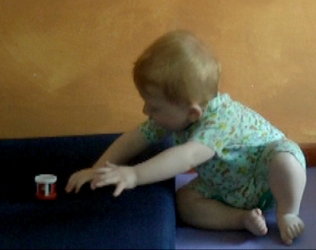
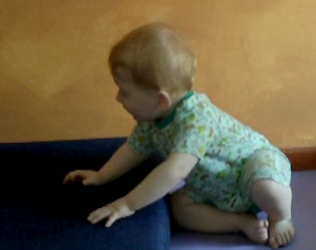
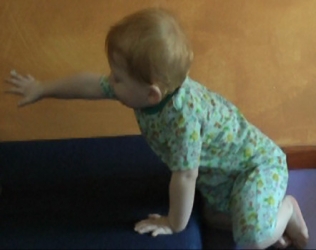
Video: Sit to prone kneeling at a foam block
Sit-to-kneel over a bolster or caregiver legs
Another ways to encourage the sit-to-prone transition is let the infant reach across a bolster of adult leg. The bolster provides some support for the weight of the head and torso as the infant shifts the weight forwards onto the arms.
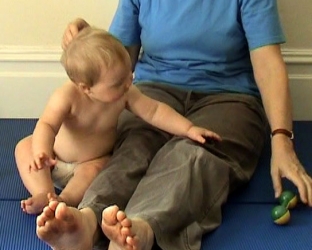 .
. 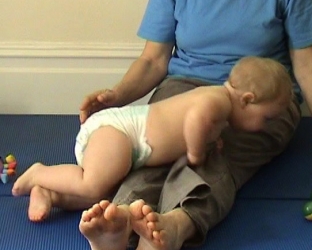
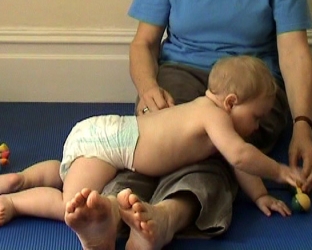
Video: Roan moving from sitting to prone kneeling